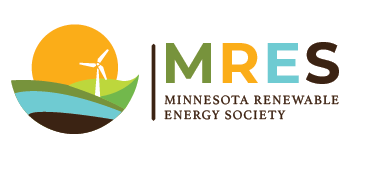MRES Community Solar Garden
MRES, along with our parter Greenway Solar, has built a community solar garden,
where qualifying households can apply for a subscription and save money on their monthly electric bill.
Join our CSG and save money on your monthly electricity bill
Savings typically $25/month
Who can Apply
You can sign up for our community solar garden if you meet all of the following criteria:
You plan to stay in your home
You are an Xcel Energy customer
A resident of Hennepin, Ramsey, Anoka, Wright, Dakota, Scott or Carver county
And if you participate in any of the programs listed in the form at the bottom of this page
How it works
Subscribers will get a credit on their bill equivalent to their Xcel rate (in $/kWh) times their allocation of production in kWh. Subscribers will pay the developer (Greenway) the Xcel rate - $0.035 times their production. Every month subscribers will save an amount equal to ($0.035 times their production), typically around $25/month!
Apply to participate by filling out the form below -
We look forward to hearing from you!
Public policy plays a huge role in shaping MRES Community Solar projects
Community Solar was adopted by the Minnesota Legislature and signed into law by Governor Mark Dayton in 2013. The program enables Xcel Energy customers to “subscribe” to a portion of the output of a solar electric project and receive a credit on their electric bill for the energy produced. How does it work? All electricity produced by a community solar project is supplied to Xcel, and the customer pays the solar project developer for the subscription. The cost of the subscription is typically less than the credit received by Xcel Energy – resulting in a net reduction in the customer’s electric bill.
Years earlier, in 1994 the Minnesota Legislature adopted the Xcel Renewable Development Fund (RDF, now “Renewable Development Account). RDF is a part of the “Prairie Island Legislation,” which allows Xcel Energy to store spent nuclear waste on Prairie Island for a price. Xcel contributes to the RDF based on the number of nuclear storage casks located on the island, and the money must be used to fund renewable energy projects.
Minnesota Renewable Energy Society (MRES) has taken advantage of both of these programs and combined them! In 2015, MRES applied for and received a grant from the RDF to build two community solar projects, one in a rural area and one in an urban area. The goal was to compare the interest of urban customers and rural customers in subscribing to a community solar project. Over time, the grant goal morphed into building the two community solar projects to serve only low-and-moderate-income subscribers.
Further, another state law, which requires Xcel Energy to use the “Value of Solar” to calculate the credits provided to their customers who are subscribers, has resulted in cost savings that now enables MRES to add a third community solar project on a building owned by the City of Minneapolis.
The bottom line is that MRES’s initial “Impact” Project, located on the roof of Impact—a marketing agency in North Minneapolis—has been operating since the fall of 2018 and is now fully subscribed. The two other projects are on hold, pending final approval by the Minnesota Public Utilities Commission. Both the “Rural” ground-mounted project near Hayfield, MN, and the “City” project on the Minneapolis East Side Maintenance and Storage Facility in Northeast Minneapolis are expected to be operational in 2021.
Project funding provided in part by customers of Xcel Energy
through a grant from the Renewable Development Fund.

